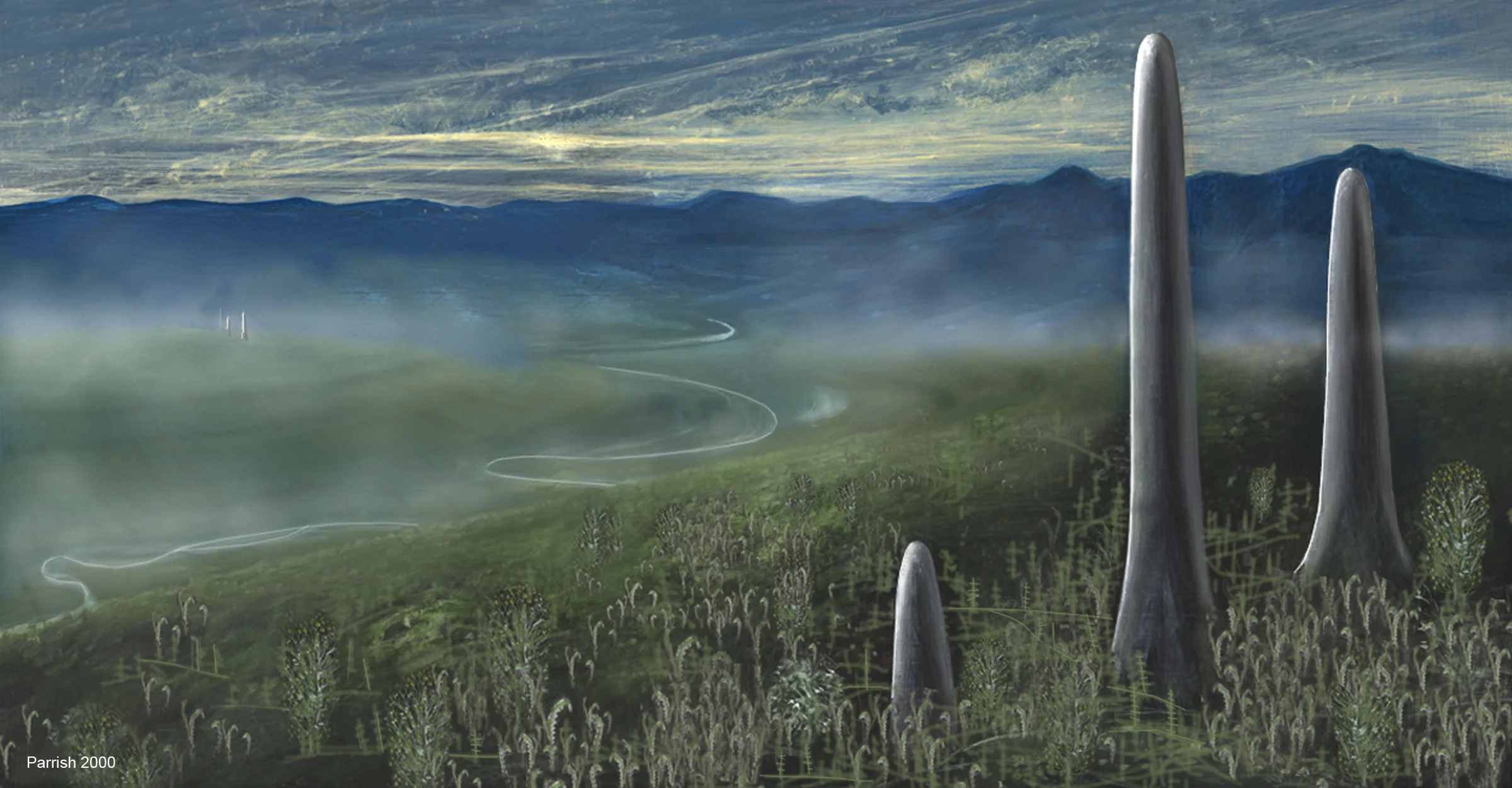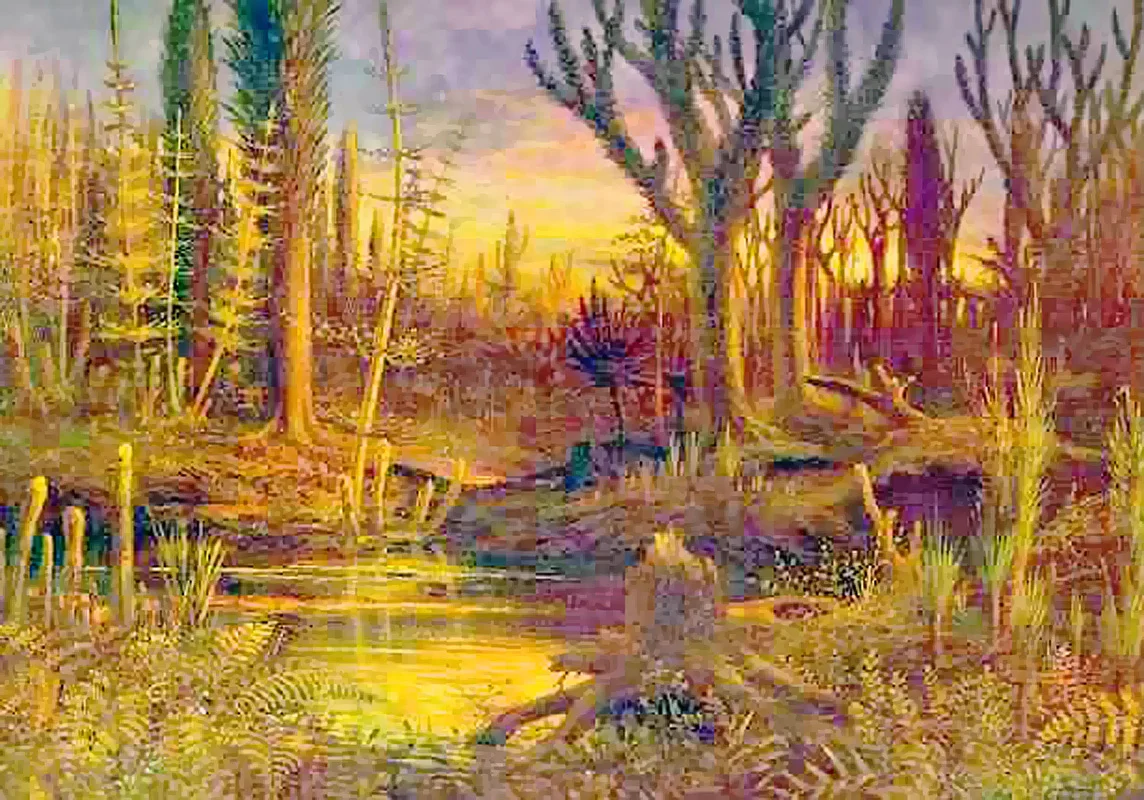This is part 3 of our multi-part series on botany, plant science and evolution, click here to read part 1 or part 2
As the Ordovician period progressed the environment changed. Atmospheric CO2 plummeted from 7000 to 4400 ppm and the Earth cools. This may have been partially caused by green, aquatic algae and land plants as they sucked and sequestered atmospheric CO2. Sea levels dropped and the shallow, continental seas receded. Gondwana, which has been drifting south approaches the south pole. The drop in CO2 and continental re-positioning contribute to a sudden, miniature ice age as glaciers appear which further decreases sea levels. A mass extinction occurs in the sea. On land, the plants are adapting. (It was funny to write about this while the Paris Climate Talks were going on. Scientists have known for a long time that organisms can change the climate.)
As the Silurian era dawns, land plants are developing vascular tissue. Our Charophyte algae have given rise to Cooksonia offshoots, leafless plants with spore-producing tips and primitive vasculature. The water vessels are made of a dead layer of cells sheathed in cellulose and lignin, the first water vessels. In this period CO2 capture actually resulted in a net-loss of water for the plants, driving vascularization. With these plants can grow to waist-height by the next era, the Devonian. Forests do not yet exist and the land plants are overshadowed by 8-meter tall fungi called Prototaxites.
A Devonian landscape as painted by Mary Parrish. Fungal columns dominate a scene clouded by mist and spores.
Over the Silurian-Devonian, as sea scorpians grew to massive sizes and bony fish grew jaws, carbon dioxide levels fell even further. The process of photosynthesis on land required more and more efficiency. Water vasculature differentiated into “trachids”, single-celled, banded woody tubes controlled by the opening and closing of stomata pores on photosynthetic surfaces. The first leaves appeared, concentrating photosynthetic activity for greater control and efficiency. Stomata migrated to the lower-leaf surface to cool the sun-beaten leaves. Soon the leaves themselves would be vascularized. Megaphyll leaves, large vascular leaves, would arise four separate times in four separate lineages, in ferns, horsetails, progymnosperms and seed plants in the Late Devonian and Early Carboniferous.
There aren't that many renderings of Devonian early forests. This one, full of giant fungi, primitive trees and pixelation comes from Wikipedia.
While leaf structure is developing, the vasculature systems of land plants are changing. Competition drives land plants to reach higher and higher for the sun. Vascular cambium appears, a ring of cells that produce water-transporting xylem in layers on the inside and phloem, living vascular tissue for photosynthetic products, on the outside. Rings of xylem are laid down over growth cycles to produce the first wood. The first plants to develop this technique were giant, Wattieza ferns. Soon after, primitive Archaeopteris trees developed, followed by horsetails.
Insects and other arthropods had already colonized the land. Amphibians wouldn't arrive on the scene until the first wetland forests created safe habitats. By Hannah Bonner
Archaeopteris is also notable for being one of the earliest trees. With the arrival of Archaeopteris and the progymnosperms the land was soon swallowed in forests. They formed the first true root systems and with this stable foundation grew to be more than 10 m in height, the tallest living things on the planet. Their height allowed them to distribute their spores worldwide. If there was available, wet, land this tree grew there. It was so sucessful it depleted atmospheric CO2 from 10% to 1%, and pumped oxygen from 5% to 20%.This single species may have laid the groundwork for every forest, floodplain and biome after it.
For example, the Carboniferous forest ecosystem. It produced enough oxygen to grow giant dragonflies (Meganeura) and millipedes, (Arthropleura)
The impact of the first tree was enormous but short-lived. Soon (in geologic time), after it emerged and blanketed the planet Archaeopteris went extinct during the Late Devonian Extinction Event. It is possible that it was a victim of its own success, the sudden sequestration of atmospheric CO2 was probably enough to cool the earth as greenhouse gases were converted into wood. Archaeopteris’s descendants, the gymnosperms, would come to dominate the earth soon after, in the Carboniferous. They partially enclosed their embryos in seeds to wait out periods of drought. This enabled them to colonize previously inhospitable areas such as slopes or highlands or places with intermittent rain. Protected and nurtured embryos with nutrient stores had a competitive advantage over spores and soon seed-plants came to dominate the landscape. Gymnosperms would continue to dominate the land until the Late Cretaceous period (approximately 275 million years) when flowering angiosperms would come to dominate plant life. Gymnosperms are still with us though, as are non-vascular plants. The next time you see a moss, pine tree, ginkgo or fern take a moment to thank them for radically changing the climate and enabling the evolution of terrestrial animals.
Paper greeting card optional. Saying thanks or planting a plant is more than enough. (source)
That concludes this post about the evolution of trees from their mossy predecessors and the impact that plant evolution had on Earth's climate. The next posts will focus on plant anatomy, how they grow and how they respond to the environment.
If you've been enjoying these posts please consider Donating to Our City Forest or Volunteering at our Planting Events or in the Community Nursery. We love working with people from the community. You're the reason we do what we do.








